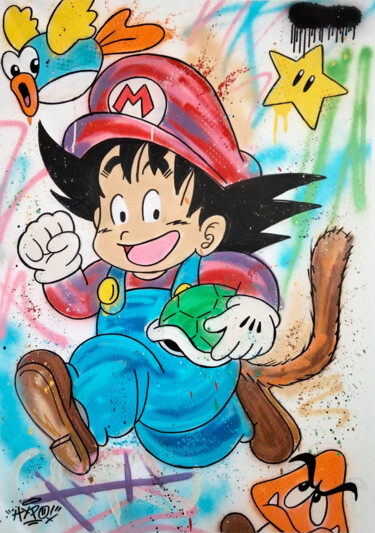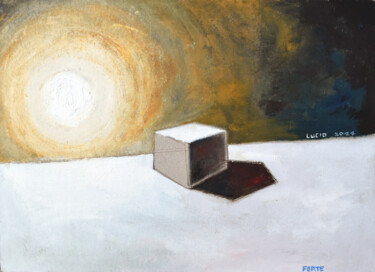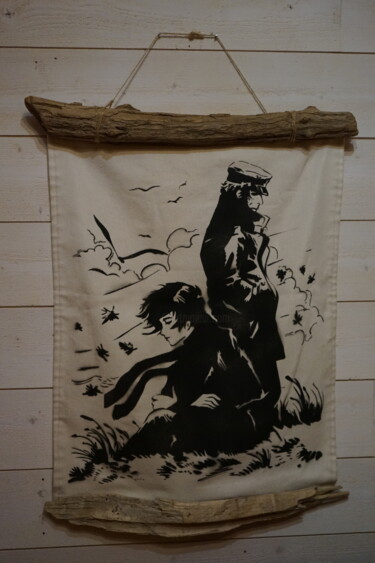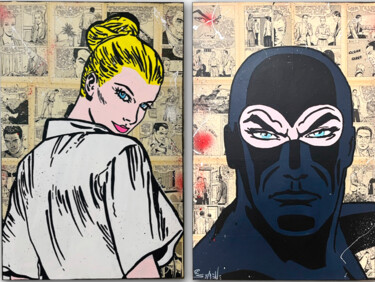
211 Pinturas originales para la venta:
¿Cómo definir estilo Arte en la calle ?
What is meant by street art paintings?
Street art paintings refer to the Street art form, borrowing its techniques, subjects and styles.
What are the techniques and themes of street art painting?
Street art, which extends far beyond graffiti and spray paint, is often humorous and thought-provoking because of the vast range of topics it covers and the innovative techniques it employs.
Urban artwork often has a political or social message meant to spark debate and discussion, despite its innately territorial and defiant character. The purpose of much street art is to bring attention to important social and environmental concerns through activism.
Street artists use a wide range of mediums and approaches while making their works. One of the most common and rapid ways to put out a work in public is through the use of spray paint, while markers, paint, and innovations like filling fire extinguishers with paint are also frequently utilized. Street artists, however, use anything from paint and markers to stencils, stickers, posters, fabrics, LED lights, mosaics, and even video projection to express themselves. One of the more recent trends in street art is "yarnbombing," or decorating public spaces with colorful works of knitting or crochet using yarn or fiber.
The phrase refers to any form of creative expression that originates in a public setting (often the street) and is typically executed without permission. The term is used to describe "graffiti" and other forms of public art.
encompasses any form of creative expression that emerges from the public sphere (often the street) and is typically executed without permission. The term is used to describe "graffiti" and other forms of public art. London, Barca, Berlin, Sao Paulo, and Toronto are among significant urban centers for street art.
Indeed, the goals and inspirations of street artists are as diverse as the artists themselves. In an effort to shock onlookers, street artists often place their creations in highly trafficked areas of cities. As a rule, it conveys a weighty message that ironically critiques society and calls for social conflict, political criticism, or even just introspection.
A wide variety of practices fall under the umbrella term "street art," such as spray paint taggery, stencil taggery, sticker taggery, wheatpasting, street poster art, video projection, art intervention, guerilla art, flash mobbing, and street installations. The use of spray cans and a free hand to create designs is characteristic of classic graffiti. However, there are a plethora of alternate approaches.
What are some other techniques of Street painting?
Mosaic tiling: It's a form of expression wherein bits of colored glass, stone, or other materials are pieced together to create a whole. The purpose of this art form is to generate visual content.
Murals: Directly painted artwork, such as on a wall, ceiling, or other surface. It's the size of a painted photograph or even larger.
Stencil art: uses shapes called stencils, typically made of paper or cardboard, upon which an image is drawn before being cut out. After that, you can make the desired design on the surface with spray paint or roll-on paint.
Sticker art: Publicly displaying an image or message on stickers. The works here are classified as post modern art. Typically, the stickers will express some sort of viewpoint.
Street art installation: A new form of "street art" has emerged. We can locate them in the usual hangouts, and this includes 3D items in populated areas.
Wheatpaste: uses a liquid adhesive produced from vegetable starch and water to adhere paper posters to walls and other surfaces.
Woodbocking: Bolts are used to secure pieces of plywood or other inexpensive material painted with artwork to street lamp posts. Bolts are often permanently secured by bending them towards the back.
Yarn bombing: It is a form of public decoration that makes use of colorful knitted or croched cloth displays. Decorative items are adorned with these textile overlays.
Led art: LEDs are the foundation of this new artistic medium. They are available for purchase at low cost.
Each of these practices qualifies as an example of STREET ART at its finest. It doesn't matter how complex a technique is, it's always created in plain sight, and it's always done illegally.
What is the difference between tags and graffiti?
Any form of public writing or artwork is considered graffiti. When an artist signs their name (or a pseudonym) on a public wall or other surface, they are said to have "tagged" that area.
Artwork with such a distinctive mark is called a "tag," and its creator is sometimes referred to as a "tagger" in the vernacular. Tagging is the earliest and most basic kind of graffiti; it's also the most widespread and can be found in virtually any city.
It's easy to think of graffiti as a phenomena unique to the 20th century. Tagging, however, has been in some form for centuries.
It was usual practice for people to leave their mark on public buildings even in ancient Greek and Roman eras. Some of this ancient graffiti survives to this day on historic buildings.
It wasn't until the 1960s, nevertheless, that graffiti pioneers established the graffiti subculture we know today. New York and Philadelphia teens, including artists like Cornbread, began tagging walls and other surfaces with their identities. As the culture of tagging evolved, the spots where tags were placed became more creative and difficult to access.
It is common for taggers to try to one-up each other by tagging over each other's creations or in unexpected places. Subway cars became so covered in graffiti tagging that passengers couldn't see out of them in the 1970s and 1980s.
See below for examples of various graffiti and tagging styles. Tagging is one form of graffiti, however not all forms of graffiti feature the artist's name or signature. More graphic patterns and graphics, stickers, poster graffiti, stencil art, and even urban knitting fall within the graffiti umbrella.
Graffiti art is a modern art movement that incorporates elements of street graffiti into more established styles. Graffiti can be done on canvas or any other type of painting surface. Graffiti can be bought and sold and displayed just like any other kind of fine art.
Tagging done on the street is illegal to sell or display publicly. Until they are covered up or removed, street tags will remain on the structure they were sprayed on. In most cases, taggers don't want to draw too much attention to themselves because they're engaged in unlawful activity.
Certain examples of graffiti, most notably Banksy's work, are conserved and put on display despite being illegal. However, it is impossible to compensate the anonymous street painters and taggers who create these masterpieces without demolishing large sections of walls or buildings.
Some graffiti and street artists, such as Eduardo Kobra and Clem$, have graduated from dodging the law and into more legitimate forms of artistic expression. These graffiti artists may work on commission on the streets as well as more conventional media like canvas. In most cases, they will still resort to spray paint or other forms of street graffiti like stenciling.
Several of these taggers are quickly rising to prominence. The identities of many graffiti artists, including the anonymous Alec Monopoly, remain shrouded in mystery. Graffiti is at the heart of this kind of anonymity.
Other distinctions exist between graffiti art and tagging that have to do with their social connotations. Graffiti and other forms of street art are generally seen as positive by the general public, and it has recently been trendy to use such artwork to spruce up rundown areas and draw in tourists. Despite this, many people still perceive tagging as damaging, and even the simplest tags are seen as vandalism.
Both street art and graffiti are made to be seen by the general public. Graffiti tagging, on the other hand, is meant to boost the tagger's reputation among other taggers; it is rarely done with the intention of pleasing the general public.
It's not uncommon for graffiti artists and taggers to be extraordinarily gifted in their craft. Graffiti artists, on the other hand, take their time to create works of art using traditional painting techniques so that their works can be appreciated by a wide audience. Tagging, on the other hand, places greater emphasis on the difficulty and danger involved in making the artwork in such places as public or otherwise difficult to access areas.
Tagging and graffiti both have the potential to be politically charged, defiant acts of expression. It's a place of beauty and peril. Graffiti artists have brought the skills and themes they developed in the streets into our homes and private collections, opening up new dialogues about the value of art.
Types of Tagging: Tags or Tagging; Fat Cap; Throw Ups; Blockbuster; Bubble; Wildstyle; Heaven or Heaven-spot.
Types of Graffiti: All styles of Tagging; Stencil art; Poster or Paste-Up; Sticker or Slap; Piece or Brush; 3D Graffiti; Cartoon; Yarn bombing
What is the history of street art paintings?
Since prehistoric times, when handprints and paintings depicting hunting scenes were affixed to cave walls to suggest the prosperity and unity of small human societies, people have been using natural surfaces to sketch and paint on. Modern street art, which differs fundamentally from the aforementioned wall writings, emerged during the 1920s and 1930s in New York City during the fight of notorious gangs, when name-based tags and crude graffiti began appearing on the streets to identify controlled territory by the gangs.
Cities in Southern California shared a similar urban atmosphere, which facilitated the gradual introduction of murals into public spaces at roughly the same time. Philadelphia and New York City are commonly cited as the cities where street art first appeared. New York was struggling financially and on the verge of collapse in the 1960s. From modest signatures to murals covering entire subway carriages, a group of artistic youth in Spanish Harlem used the city's enormous regions of boarded-up buildings, vacant lots, closed factories, and construction sites as their canvas.
In an effort to stand out from the crowd, many pioneering street painters of the 1970s began using creative fonts and bold colors to sign their identities and pseudonyms. Martha Cooper is one of the few notable artists that photographed the early growth of street artist communities and their associated creative energy. She first began photographing and writing about New York City's street art and artists in the 1970s, and her book Subway art, published in the early 1980s, was a major factor in the scene's growth and evolution. Cooper's skinny paperback edition was soon adopted as a manual for train writers and graffiti artists all around the United States and Europe.
Artists like Keith Haring and Jean-Michel Basquiat from the New York street art scene in the 1980s gave credibility to such a domain and brought their works from the streets into the fine art world, marking the beginning of the mainstream acceptance of street and graffiti art. Even though such activities are prohibited in many locations throughout the world, the art form has since established itself as an established part of the art world and been validated as a cultural phenomena.
The graffiti that appeared on walls and train cars was among the earliest examples of street art. These activities were carried out by gangs in New York City throughout the 1920s and 1930s. In the 1970s and 1980s, this subversive culture had a profound effect on society. The History of American Graffiti, written by Roger Gastman and Caleb Neelon, chronicles this cultural phenomenon. These decades marked a watershed moment in the development of street art, since they were when young people began to forge a movement in response to their sociopolitical surroundings, effectively putting the 'fight for meaning' into their own hands.
The 'grown-up' world caught on quickly to this subcultural phenomenon and eventually came to respect it. It had evolved into a legitimate form of artistic expression at the hands of young people using spray cans. Photographer Martha Cooper is one of the most well-known names in the field of recording street art and artists. In due time, photography wasn't the only medium that could record and 'displace' street art. Although it originated as a criminal enterprise, the practice of making art by destroying it has given rise to a wide variety of aesthetic expressions that have since found their way into museums, galleries, and the international art market. Although it is still a rebellious and, for the most part, illegal activity, street art has earned its place in the modern art world because to the efforts of art enthusiasts and experts.
What about French street art?
French artists like Invader (whose mosaics influenced Banksy) and JR (inducted into Time's 100) are among the most well-known in the world. Read on to learn how these and other artists de rue have influenced the development of urban art and culture, if you aren't already familiar with them. You'll have no trouble recognizing well-known Parisian murals once you've familiarized yourself with French street art.
The history of street art in France, possibly the most prolific bastion of the movement, should not be forgotten just because books and research have been written and undertaken on the history of street art in the United States and the United Kingdom. While traces of graffiti can be found throughout France's past, they are typically standalone works that are not directly related to the prevailing political and social climate. France takes pride in having been an originator of major political upheavals in contemporary history, and this revolutionary attitude has always been fostered there. The street art movement is stronger than ever despite the fact that France and Paris in particular have tough regulations against vandalism and harming of public property and monuments (a law from 1994 stipulates up to 10 years in jail and penalties up to 150,000 euros for vandalism of public landmarks). Perhaps the anonymity of the artist, with whom viewers can immediately identify, is part of the attractiveness of street art. However, we need to look back at the histories of some of the art's forebears in order to fully grasp the enduring desire of many urban artists to keep painting in places they aren't supposed to. Recalling the time just following World War 2.
Paris, which is sometimes unfairly disregarded, had already progressed in a distinct street art path by the time New York's graffiti began to take form and meaning in the late 1970s. The French metropolis was suddenly covered in stencils, posters, and murals that introduced new methods of public art alongside the more popular New York City aerosol. French street art expanded beyond lettering to incorporate poster wheat pasting, stenciling, and other non-traditional forms of expression, building on the country's rich artistic history.
Already in the sixties, avant-garde painters, Nouveau Realists, and publicly conscious Conceptualists in Paris were creating works that served as announcements of what was to come in the form of street art. Jacques Villeglé, a devotee of the New Realist movement, is notable for his original use of vintage posters in his own artwork. His use of decollage and an abundance of typography were revolutionary at the time, but Villeglé was oblivious to the notion that he was engaging in what we now call "upcycling." His work, created with discarded posters, was intrinsically linked to the sidewalk, the working class, anonymity, and the fringes of society.
Similarly, the participation of artists in public life expanded to incorporate more and more of the public sphere. In 1970, Daniel Buren made a site-specific piece called Affichages sauvages for the Parisian metro, and later expanded it to the subways in Tokyo and New York, riding the wave of performance and abstract minimalism while also being spurred by the rising use of easily reproducible posters. In 1967, when the first'savage views' were published, the artist launched what was effectively a culture jamming effort. Posters were one of the most popular forms of street art since they could be reproduced quickly and easily and put up immediately. The French street art scene has long since veered away from graffiti to instead focus on larger, more global political topics.
The vast remains of Les Halles, a green market in the center of Paris that was razed in 1971 to make way for a contemporary metro station and a shopping center, are widely acknowledged by French art historians as the birthplace of street art as we know it today in France. In an effort to commemorate the 1945 atomic bombing of Hiroshima, artist Gérard Zlotykamien visited the bombed-out scene and created silhouettes of reclining human figures. As an art medium, he resorted to spray paint. At the same time, in Paris, another movement trailblazer was hard at work. His wheat pastes, which are imbued with politics and poetry, emotion and the souls of those who need to be remembered, describe an alternative modern history and bear his name: Ernest Pignon-Ernest, a member of Fluxus. Around the early 1970s, he plastered silkscreen portraits of Arthur Rimbaud in the romantic poet's preferred Parisian haunts. To this day, Ernest Pignon-Ernest is actively creating his ethereal, agonizing spatial installations that bring attention to the periphery.
French street art was socially conscious from the start, and it quickly included a wide variety of media, particularly those that were already being used to spread propaganda. Mussolini's legions, the Italian fascist ruler of the time, made extensive use of stencils, now one of the most frequent and well-known techniques in street art. Banksy's influence is well acknowledged, however the creative potential of stenciling was first demonstrated by a French artist. In the early 1980s, Blek le Rat began disseminating his life-size rat stencils and other trademark graphics around Paris. He was an innovator and an inspiration to many. Blek le Rat never tried to hide the fact that Nazi stencils were a major source of inspiration for him, and he often made reference to them in his writing.
At first glance, it may seem strange that a civilization as open-minded as America's would adopt a technology originating from such a conservative worldview. The aesthetics or simplicity of many cultural influences have proven to be a good fit for street art over the years, although these have always been modified according to the central concepts of the movement. Through the eyes of an artist, a fascist fave is transformed into a herald of liberation. Of course, this wasn't the first time stencils had been utilized for anti-fascist purposes; a German political organisation and protesting students in Paris in 1968 had both done so as well.
The 1980s were a particularly good decade for street art because that was when the trend first began to attract the attention of authorities, even if they initially dismissed it as absurd. Graffiti has spawned a number of famous writers, including the currently most expensive living artist, Jean-Michel Basquiat, whose meteoric rise to fame ultimately led to his demise. Jef Aerosol, a French artist originally from Lille, is one of the most well-known street artists in the world. He rose to prominence in the 1980s and has never stopped creating art. His meticulously crafted stencil pieces frequently feature not just well-known people from pop culture's past, but also outcasts from mainstream society. His signature red arrow provides a clue to the meaning behind his urban-themed compositions and appears in all of his works. Miss Tic was the first female street artist in France, and she was a contemporary of Jef Aerosol. Beginning in the mid-1980s, she worked primarily in the 13th and 20th arrondissements of Paris, where the city's working class was concentrated. Even though her stencils are hard to come by, they do exist, and they all share a distinct pin-up aesthetic followed by a literary statement that frequently quotes song lyrics. The government now has to restore and preserve her works instead of just wiping them clean.
In the 1990s, Paris's priceless street art was given a sparkling makeover thanks to some very expensive cleaning. Zevs is a well-known artist whose style developed throughout that decade; he is well-known for his use of well-known logos into his works and for his peculiarly clean method of liquefying the letters and signs. As a member of the creative class of the 1990s, Monsieur Chat is well-known for his depictions of iconic yellow cats. This Swiss artist has made Paris his home for quite some time, and his cats continue to brighten up billboards, subway stations, and other public spaces, both expected and unexpected.
A new generation of street artists emerged in the 1990s and 2000s, redefining the parameters of what street art may and should be. Large-scale murals, graffiti projects, and street art organizations made their way legally into the center of Paris as official attitudes towards the movement shifted. Some of the world's most illustrious museums and galleries, like the recently featured Lasco Project at Tokyo Palace, have devoted significant segments of their programming to street art as a means for modern artists to share their ideas and techniques with the world. Some of the most well-known practitioners of this style are members of a generation born at the tail end of the 1970s.
Invader, the original Space Invader, is already a legend thanks to the widespread popularity of his mosaic recreations of classic video game characters. It has been theorized that his parts fit together to form a massive invader from outer space, but we'll never know for sure. The significance of Invader's work lies less in its method and themes than in the increased mobility of artists, of which he is a pioneer. In addition to his widespread popularity, he also made an appearance in Banksy's film Exit through the gift store. In addition to Invader, there is currently a large body of French artists at work; these artists have all found a way to express themselves by drawing either directly or indirectly from the rich history of street art in France. There's Seth Globepainter and his romantic imaginations, C215 and his incredible stencil technique, cats, and portraits of everymen, L'Atlas and his minimal, angular lettering, Miss Van, a woman in every sense of the word, and her burlesque cats and her global understanding of residence (she currently resides in Barcelona), phenomenal crews like Da Mental Vaporz that bring together extraordinary talents like Bom. K, Lek, Sowat, and many The list goes on, and so does the wealth of modern street art expression in France, where this radical new trend has found a welcoming home.
The public's admiration of street art has led to a surge in the market for artwork, which in turn has led to the opening of museums and galleries specializing in the genre. Galleries like Galerie Perrotin, Galerie Itinerrance, and Magda Danysz can be found alongside more modest galleries. Recent months have seen an increase in murals in every district, but the 13th continues to be a major center. The future of street art is uncertain, but it is being promoted through large-scale initiatives like Tour 13 and Le MUR. Therefore, old lady Paris is not up for grabs just yet, as it is currently home to the most radical art movement of our century. This may be an unconscious nod to the innate revolutionary tradition that is so French. Even street artists like Banksy and Shepard Fairey were excited to come here because of how lively and appealing the setting is. While laws remain severe in some areas, others, like the 13th district, show great promise as the future center of not only French but also Parisian street art.
What about Street art painting today?
There is more to this tale than merely taggers. It is fascinating to watch the growth and variety of street art in the twenty-first century, even though the genre owes some of its renown to this type of expression. For instance, similar to graffiti, stencils have existed throughout history as vehicles for social and political activism, both by those in authority and those who resisted them. Artists like Banksy, whose documentary Exit via the gift shop changed the way people saw street art, were instrumental in this development. With the rise of artists like Vhils or BLU, street art became a testing ground for various methodologies, but it never abandoned its rebellious stance against the hegemonic patterns and structures of popular culture and the mass media's representation of reality.
As a result, street art spawned a new generation of artists capable of producing magnificent murals, as well as those who can mix video art and other performing features into their creative work 'on the streets. One must take part in the vitality of this exquisite cultural phenomena, not only as a spectator but also as a potential participant in order to fully grasp the evolution of street art.
Street art has come a long way from its origins in painted murals in Latin America in the early 20th century and the introduction of spray-can graffiti by Latino gangs in the 1950s. Its prevalence around the globe and development into a multifaceted art form are both testaments to its enduring appeal. As a global overview of the urban art landscape, The World Atlas of Street Art and Graffiti compiles the best examples of their work from all around the globe. The development of street art and graffiti in each area is documented alongside specially commissioned "city artworks" in this lavishly illustrated volume. The book showcases the work of over a hundred significant street artists, such as New York's Espo, Los Angeles's Shepard Fairey, Brazil's Os Gêmeos, and Australia's Anthony Lister, among many others.
Does street art change when it is displayed in galleries?
It did not take long for the conventional art world to recognize the value of graffiti and street art and include them in its galleries and institutions, despite their origins as illegal, underground manifestations in the streets. On the other hand, does street art cease to be street art once it is reproduced in a gallery? Isn't one of the goals of street art to blend into the background of the city? Isn't the vitality of the counterculture attitude on which this creative form is based stifled if it moves to institutionalization?
It has been almost half a century since these questions first emerged in relation to graffiti and street art that art museums have collected and promoted, but the answers are as pertinent today as they were then. To what extent does street art suffer when it is housed in museums and galleries? And what do artists think about it? Is it still street art if it is displayed indoors?
The origins of graffiti and street art can be traced back to the late 1960s and early 1970s, but it did not take long for these practices to be accepted by the mainstream art world. This was thanks to the efforts of a few forward-thinking creators, gallery owners and collectors. In September 1973, the United Graffiti Artists (OGA), a collective that included Hugo Martinez, PHASE 2, Mike 171 and SJK 171, organized the first graffiti exhibition in a gallery. The underground community thrived without outside interference for the next half-decade. Then, in October 1980, the Fashion Moda gallery in the South Bronx hosted one of the first and most influential exhibitions of graffiti and street art. The show included artists such as Basquiat, Futura 2000 and Kenny Scharf.
Rome's La Medusa Gallery was the first in Europe to present graffiti art. After Italian art dealer Claudio Bruni purchased "graffiti per square foot" from graffiti legend Lee Quiones and hip-hop pioneer Fab 5 Freddy in December 1979, the works were displayed in an exhibition. That same year Hugo Kaagman and Diana Ozon, two of Amsterdam's first graffiti artists, opened the city's first (punk) graffiti gallery, calling it ANUS Gallery. The works of graffiti pioneers, including Seen, Blade, Futura 2000 and Dondi, were exhibited at Yaki Kornblit Gallery in late 1982, three years after their debut. The exhibition marked a first, as it presented American graffiti in an exhibition context in Amsterdam. A large number of Dutch writers adopted "New York stylewriting" after being exposed to the American aesthetic.
The question that arises is, what got the establishment interested in graffiti and street art? It was a natural evolution of the developing art genres. Artists in all genres (painting, sculpture, music, fashion, and film) continued to hone their craft and experiment with new things. Historically important museums and thoughtful collectors gradually expanded their collections of street art and other forms of urban expression, recognizing and appreciating this new aesthetic coming from the streets.
Only a small number of "art visionaries" in the 1970s and 1980s helped bring graffiti and street art into museums and galleries; today, however, the works of (former) graffiti and street artists are regularly auctioned for tens of millions of dollars worldwide. Without a doubt, art movements have emerged from the margins to take center stage.
Although graffiti and street artists have been accepted into the art world, they have been able to maintain greater autonomy from the cultural establishment than other artists. With the help of the Internet and social media, graffiti and street artists can market and sell their works directly to the public, eliminating the traditional intermediaries in the art world, such as gallery owners and buyers.
The inclusion of graffiti and other forms of street art in museum exhibitions has always been controversial. Many (still) believe that when a form of expression that emerged illicitly in the public sphere and whose origins lie in the advocacy of nonviolent civil disobedience is institutionalized, it loses much of its relevance. Without the freedom and excitement to create in public spaces, artworks are no longer in danger of being destroyed or removed.
The changes brought about by this transformation are extensive. Artists can use more sophisticated equipment, such as scaffolding and ladders, when commissioned by a museum or other facility. As a result, they are able to overcome the external restrictions imposed by "human scale," or the height that a human hand is able to reach. Moreover, street art in a gallery or museum becomes an individual work of art, no longer part of the whole of an urban area and every possible work that precedes or surrounds it. Unlike a permanent structure such as a brick or concrete wall, a canvas is portable and can be easily moved from one site to another.
Because of these shifts, many artists and scholars believe that street art can only flourish in urban contexts, where it can have the greatest political and interventionist capacity to spark dialogues. They believe that the value of street art stems almost exclusively from its social value in public spaces. Institutions such as museums, galleries and biennials are only distractions that interfere with the messaging and artistic freedom inherent in graffiti and street art.
Of course, the counter argument holds that indoor street art is just as valid as its outdoor counterpart. This line of thought is based on the assumption that the primary inspiration of street art is still the street, regardless of whether you look at it on the street, in a studio, in a gallery, in a museum, or on the Internet. Thus, the main characteristic of street art is its interaction with the urban environment. According to this school of thought, everything that is discovered on the street is brought to the studio and vice versa. The broad appeal and edgy spirit of street art are preserved even when transferred to canvas. The form and content are essentially the same. For street artists, there is no fixed canvas or place. When creating works on canvas, any artist who is or has been active in the streets is still considered a street artist.
How to decorate with street art paintings?
Although some of us may find the appearance of graffiti tags and spray-painted statements in our neighborhoods to be unattractive and even slightly threatening, there is no denying that authentic street art is a current creative phenomena in the United Kingdom. Walls covered in Banksys are being ripped down by art dealers, shop owners are spray painting their shutters and storefronts to keep up with the current trends, and universities are offering courses on the aesthetics and history of graffiti.
It's not surprising if your kids or grandkids desire to do up their room in a graffiti theme, given that street art is here to stay and the UK is in the very center of it. You might even want to give in to the aesthetic for a home theater or game room of your own.
The quickest way to give a space a graffiti vibe is to spray some artwork on the walls by hand. You may find spray paint at home improvement stores. You can even utilize paint sold at stores that specialize in automobile parts, maintenance supplies, and motor oil (although it is always best to wear a mask when spraying). If you want to use graffiti paints like Krylon and Ironlak, you'll need to be a skilled artist with a steady hand and a lot of practice. Graffiti artists make it look easy, but mastering their craft takes years of practice.
A stencil, which you can create yourself or download from any number of websites offering everything from superheroes to sports figures and lettering, is a good alternative if you lack the freehand abilities essential. There are countless tutorials on YouTube that will walk you through the steps of making your own stencil. Once you understand the principles and realize that your picture needs to be bold and avoid little, fiddly lines, the procedure is pretty straightforward.
For the most part, printable stencils allow you to simply copy the street style of artists like Banksy, though without the humorous political commentary typically associated with their work. Of course, if you seek hard enough, you can discover stencils with similar messages. You can achieve a look that is at home in the trendiest parts of our cities by painting the walls in bright, simple colors and spraying through your stencils with black or white paint. It won't break the money and is sure to be a hit with teenagers. And when your kids get bored with one celebrity or another, they can simply paint over the stencils and replace them with new ones featuring their current obsession.
If you have a higher budget, you can commission a professional graffiti artist to create a one-of-a-kind mural for you. You could risk your life by heading to the next railroad yard or underpass at night in search of an artist to paint your mural, but it's probably a better idea to just ask around.
You might ask retailers who have employed graffiti on their storefronts or peruse the local newspaper for mentions of artists active in community projects to get ideas. You can also see examples of the work of local painters who make a living spray-painting on websites like Paint My Panda.
Find an artist you admire and sit down with them to discuss the work you want done. Since you are the one paying them, you may decide whether to provide them completely free rein creatively, offer suggestions for designs, or want a more subdued take on street art. While it is helpful to provide examples of your preferred styles, keep in mind that a major draw of street art is its freedom of expression. If the artist you hired lives up to your expectations, you should have a one-of-a-kind masterpiece that was well worth the investment.
Who are some of the most well-known and influential street artists and painter?
Bansky
In other words, who is Banksy? It's a question worth a few million dollars at the very least, and many people have tried to answer it by connecting the supposed artist's activities and traces to those of other, more famous artists and celebrities. None of the rumors that have been spread by the media have been proven, and knowing who the most famous modern street artist really is can make his supporters lose interest in anticipating the next brilliant stunt by the British artist. There are so many unanswered questions about him and his works. The meaning of his graffiti is unclear. If you're interested in learning more about this brilliant musician, read on! Banksy is an unnamed English street artist and writer originally from Bristol who is widely considered one of the most influential figures in the field of contemporary street art. His works often feature biting social and political commentary. His stencil-created graffiti is marked by a dark sense of humor combined with pointed societal criticism, frequently addressed at specific audiences in relation to the locations of the murals themselves while also communicating broader ideas. In 2010, a documentary titled Exit Through the Gift Shop was released, purportedly about the life and work of the artist Bansky. Several street artists, including Banksy (whose face is hidden by a black hoodie), are interviewed in the film. The two most widely held hypotheses as to his identity are that he is either British artist Robin Gunningham or Massive Attack member Robert Del Naja. One can use the term "guerrilla art" to describe Banksy's practice, which involves the use of urban public space to launch insights into contemporary concerns and the leaving of traces by anonymous authors who never divulge their identities. The British artist loves to poke fun at the follies and contradictions of Western culture, exposing its insecurities and mistakes through a series of recurring themes. He enjoys playing a wide variety of characters, including monkeys, rodents, children, policemen, and even genuine cats, in hilarious and heartwarming circumstances. The British artist is fluent in the linguistic codes of capitalist society's mass culture, which allows him to transform serious and sometimes painful issues into comedic pieces that raise awareness and ultimately contribute to greater social harmony in urban areas. A straightforward language with multiple layers of meaning that may be appreciated by everyone. Some of Banksy's works have entered the popular imagination and become icons in their own right. Since the same subject can be reproduced in numerous contexts and with diverse meanings, the stencil technique enables the artist to produce works that feel like they were made in a series. Banksy's work is accessible to all thanks to his use of a pop language that is close to the language of advertising; through irony, poetry, and the subversion of meaning, the street artist tackles and holds up to public scrutiny weighty issues like war, invasion, the negative effects of materialism, and poverty.
Keith Haring (1958 – 1990)
Even to the layman, the work of Keith Haring is immediately recognizable as that of a major 20th-century artist. U.S.-based street art legend Keith Haring frequently used his work to advocate for then-current causes, including civil rights and the elimination of racism and homophobia. Not only did he take the lead in bringing attention to the dangers of crack, but he also advocated strongly for sex education to be implemented in schools as a means of reducing the prevalence of HIV/AIDS. Despite the fact that Haring placed a premium on his artworks' interpretations, he rarely gave any sort of commentary on their significance and left nearly all of them untitled. Indeed, the artist claimed that stipulating an exact definition reduced the artworks to the author's own interpretation, making the viewer a mere bystander. Instead, Keith Haring advocated for audience participation in the creative process by encouraging each individual to provide their own unique interpretation to the work, on par with the artist's own. Keith Haring's parents, Joan Gruen and Allen Haring, an engineer who spent his free time drawing comics with his kid, brought him into the world in Reading, Pennsylvania. Young Keith's earliest attempts at drawing were probably caricatures of cartoon characters. Haring was raised in a Christian youth group, and his formative years were shaped by his faith. These early and ongoing connections to the ethereal sphere shaped his work for years to come. Keith Haring began studying commercial art at the Pittsburgh Art Institute in 1976, but he quickly lost interest in the field and left to take a position at the Pittsburgh Center for the Arts instead. The works of several contemporary artists, including Jean Dubuffet (Le Havre, 1901 - Paris, 1985), an exponent of the Art Brut art movement, and Jackson Pollock (Cody, 1912 - Long Island, August 11, 1956), the leader of abstract expressionism and inventor of the dripping technique, were particularly influential on Haring's development of style during these years. However, Pierre Alechinsky (Schaerbeek, 1927) and Christo Javaev (Tbilisi, 1975) were the authors who had the greatest influence on his work (Gabrovo, 1935 - New York, 2020). The former inspired him to create monumental works that fused words and pictures, while the latter got him thinking about the value of community service. Keith Haring arrived in New York in 1978 and enrolled at the School of Visual Arts. While living in the big city, the young artist was exposed to a vibrant art scene that existed outside of traditional art spaces. The city's nightlife and the many street artists particularly captivated the young Haring. When Keith began hanging out in these communities, he was introduced to two young artists: Kenny Scharf (Los Angeles, 1958) and Jean-Michel Basquiat (New York, 1960 - New York, 1988). This latter individual also put him in touch with Andy Warhol (Pittsburgh, 1928 – New York, 1987), arguably the most well-known American artist at the time. The energetic vibe and developing street art in New York City left a lasting impression on Keith. To escape the intensity of New York City, Haring abruptly quit his studies at the School of Visual Arts and instead began groundbreaking research in the field of graffiti painting. Some of the ideas that would later shape his technique crystallized during this time, including the significance of motion in compositions and the necessity of making art that could be appreciated by the widest possible audience. Artist Keith Haring became well-known in New York City after producing a large body of chalk graffiti on empty subway billboards. The ambitious author thought of these blackboards as his own personal journals, where he could test out his thoughts and ideas. In addition, he thought they served as a great link between the artist and the countless people who passed by them every day on the subway. Some of Keith Haring's most recognizable characters, like the glowing kid, first appeared on these panels. It looked like a dashed-out picture of a toddler crawling, with the child's body filled with vitality. In the 1980s, Keith Haring's career took off, and he became widely regarded as a major figure in the American art world. In 1981, New York's Westbeth Paintes Space hosted his debut solo show. Less than a year later, the painter had a one-man show at Tony Shafrazi's gallery in the trendy Soho district. Soho was rapidly becoming as a major hub for cutting-edge contemporary art, and the chance to show his work there would bring a lot of attention to his career. Keith then went on to participate in a slew of international shows in the years that followed, including Documenta 7 in Kassel and the Whitney Museum biennial. In addition to his artistic output, Haring collaborated on a variety of marketing projects. Examples include the Absolut Vodka commercial campaign and the Swatch watch dial. As was previously noted, Keith Haring did not restrict himself to art for the sake of art but instead used his talents to aid in a wide range of political and social causes. Such examples include Haring's 1985 contribution of graphics to the political fight for the liberation of South Africa and his 1986 involvement in the development of a poster for the great march for global nuclear disarmament. In the same year that Haring designed and opened the Pop store, a variety store, he also traveled to Berlin to paint a mural for the Checkpoint Charlie museum (see more about the artist's work in Berlin here). The 1980s were a pivotal time for Keith Haring as an artist, but they were also the decade in which the AIDS virus spread rapidly. Official recognition of this phenomenon did not occur until 1981, and at first, it was thought to have spread only among members of the homosexual community and other marginalized groups. Keith Haring started a campaign to raise awareness when he and many of his friends were diagnosed with AIDS in 1988. The artist started the non-profit Keith Haring Foundation to advocate for kids and promote sex education and STD prevention initiatives. Finally, in the years leading up to his death in 1990, Haring created public works for charity and awareness campaigns (his final piece, the mural Tuttomondo, is placed in Italy, more specifically in Pisa).
Jean-Michel Basquiat (1960 – 1988)
Jean-Michel Basquiat (New York, 1960–1988) was an American artist who is widely considered one of the most influential figures in the history of graffiti art and the neo-expressionist movement. For him and other "writers" like Keith Haring, the level of expression and content in his graffiti was so high that it went from the walls of New York City's streets to the halls of museums. Basquiat lived a brief, intense life. Success came swiftly for him, and by the late 1970s and early 1980s he had become a significant player in New York's thriving art scene, even working with his artistic hero, Andy Warhol. And yet, he rapidly lost control of his drug addiction, which ultimately led to his untimely death at age 27. Basquiat's paintings, full of jarring forms and bright colors, created as if they were reflections of an innate need, provoke the observer into contemplating certain aspects that characterize current society, such as capitalist hypocrisy and existentialist. Jean-Michel Basquiat was born on December 22, 1960, in the New York City neighborhood of Brooklyn. His mother, Matilde, was of Puerto Rican heritage, while his father, Gérard, was a native of Haiti. Basquiat was predeceased by his older brother Max, who left behind two younger sisters, Lisane and Jeanine. His art-loving mother took him to the best New York museums when he was a kid so he could learn about the world's greatest works of art. Basquiat started reading and writing at an early age and drawing shortly thereafter, all of which were likely influenced by the cartoons he frequently watched on television. Since then, he's been attending a special elementary school for creative students. Basquiat had a difficult childhood and adolescence because of his parents' divorce and subsequent placement with his father and two sisters. However, Basquiat's mother was frequently admitted to psychiatric hospitals, and the artist was unable to cope with the intense range of feelings that came with this circumstance. He skipped out on his family at age 15 after his father caught him smoking; he slept on a park bench and was eventually imprisoned for vagrancy. Because Basquiat was too sick to go to regular school, he was enrolled in the "City-as-school," an institution that uses nontraditional teaching methods to help pupils like him. In that setting, he met and became friends with graffiti artist Al Diaz, who helped Basquiat realize he had talent as a writer. Basquiat and Diaz created an artistic connection under the moniker "SAMO" after spending a lot of time together, sketching and doping heavily. The two pals came up with the moniker after commenting on their joint as "the SAMe Old crap" ("the same old shit"). SAMO was more than a monogram; it was a philosophy. The phrase was coined by Basquiat and first appeared in a novella he wrote in 1977. The novella's protagonist is a young guy who meets a holy man who encourages him to join many faiths. It is the SAMO religion, which stands in direct contradiction to the teachings of Catholicism by teaching that "we do on earth whatever we like, then believe in God's favor with the excuse that we didn't know," that ultimately wins him over. A full-scale promotional campaign featuring illustrations from the couple and other classmates followed the novella's publication. Throughout May of 1978, the name Samo started popping up as a "tag," the standard lettering that artists use to sign their graffiti, in the Soho and Tribeca areas, often alongside the copyright symbol. In time, SAMO graffiti was well recognized and admired. As the phenomena gained attention, a growing number of publications published requests for the anonymous author to disclose himself. In 1978, Basquiat and Diaz got into some trouble at City-as-School, which led to their expulsion. Afterwards, Basquiat's father threw him out of the house. The two of them eventually joined the student community at the School of Visual Arts, despite being unable to enroll in classes or even visit the campus. Among these pupils was the future superstar Keith Haring, who discovered Basquiat to be the man behind the SAMO tag and became fast friends with him. In 1980, Basquiat and Diaz's collaboration came to an end because to their differences in style and personality. Basquiat temporarily continued using the tag after the duo split up, but changed it to "SAMO IS DEAD." In addition, Basquiat made an appearance as himself in the movie Downtown 81 this year. The movie didn't come out until 2000, though, so it was delayed by 20 years. Before he became famous, Basquiat tried to make ends meet by peddling illustrated postcards all throughout New York City. This was shortly after he had dropped out of City-as-School. Years before, after graduating from City-as-School, Basquiat hawked drawn postcards throughout New York in an attempt to support himself financially. One day he went to a Soho café in search of buyers and there he saw Andy Warhol, the preeminent exponent of Pop Art, whom he greatly admired. He went up to him, introduced himself, and thus began a human and artistic relationship with him that lasted for a number of years and was not without its share of ups and downs. Meanwhile, Basquiat made regular visits to Club 57 and the Mudd club, two New York hangouts frequented by a wide range of creative types from the art world, the music industry, and the film industry. Multiple people liked him and he was sought after because of his charisma and flamboyance (among the most talked-about acquaintances was one with singer Madonna, then at the beginning of her career). Blondie lead singer and Basquiat pal Debbie Harry bought his first artwork, "Cadillac moon," in 1981. In addition to working together on the music clip for one of Blondie's biggest singles, Rapture, Basquiat and Blondie had met on the set of Downtown 81. In the same year, he met Annina Nosei, the gallery owner who would later become a major patron of Basquiat's work and provide him with a home base in the gallery's basement. Again with Nosei's help, Basquiat held his first solo display at Galleria Mazzoli in Modena in 1981, but the reception was, to put it mildly, not stellar (the show followed his outright debut by a year, at the group show The Times Square Show in New York). But the solo retrospective that was held in New York in 1982 was the pinnacle of a career that was quickly rising to prominence. In the years 1984–85, Basquiat held a number of shows in both New York and Europe, and his work was featured on the cover of the New York Times magazine. In a short period of time, Basquiat rose to prominence as one of the most sought-after artists by yuppies, successful businesspeople who turned out to be excellent customers for galleries. Prices for his artwork skyrocketed. However, Basquiat's drug abuse eventually took over his life, and he developed some major behavioral abnormalities. For example, he frequently exploded into paranoid attacks on the people in his immediate vicinity. Basquiat's circumstances worsened after Andy Warhol vanished, prompting him to turn to heroin consumption in an attempt to compensate for the void in his life. After an overdose at his loft on August 12, 1988, he was found unconscious in 1987 after having undergone detoxification. In spite of everyone's best efforts, Basquiat was pronounced dead upon arrival at the hospital.
CornBread (1953)
CornBread, whose real name is Darryl McCray, is a graffiti writer and artist from Philadelphia who is largely regarded as the genre's pioneer. He entered the world of graffiti in the 1960s and is credited with modernizing the subculture. He is well-known in the graffiti community and also gives talks and advocates for young people.
Shepard Fairey (1970)
The popular skatewear label OBEY was created by current American street artist Shepard Fairey. Fairey also paints murals and does graphic graphics and designs, in addition to his stencil works. Former US president Barack Obama's emblem and "Hope" poster from his victorious 2008 campaign were both designed by him.
Lady Pink (1964)
Lady Pink, an Ecuadorian-American painter, muralist, and graffiti writer, rose to fame in the late 1970s thanks to her work on the subway trains, and she went on to become a legendary figure in the 1980s hip hop and graffiti scenes. She has employed graffiti throughout her career as a means of empowering women, and she continues to develop as an artist by producing large-scale pieces all over New York and leading community mural workshops.
Blu
Blu is an Italian street artist who hails from Bologna. His large-scale, politically motivated murals have earned him a reputation as an ambitious artist. MUTO, a hybrid of street art and stop-motion animation, is his most well-known work. To show his displeasure with the city's treatment of its young people, he gradually painted over the murals he had painted on Bologna's streets for the previous 20 years in 2016.
What are the most famous street art works?
Bansky - Flower Thrower
One of the most recognizable works by the British artist is a depiction of what appears to be a participant in a revolution while hurling a bouquet of colorful flowers. A work that brings back memories of the phrase "putte dei fiori nei vostri cannoni," one of the slogans against the Vietnam War in the 1970s. The peace and positive energy conveyed by the gesture of throwing a stone or a weapon becomes clear.
Bansky - Sweep it under the carpet
One of Banksy's most recognizable pieces, this mural depicts a maid who sweeps dirt under the rug, alluding to the Western world's and governments' approach to contentious issues on a worldwide scale. This piece is located in two separate areas of London, at Chalk Farm and close to the White Cube Gallery.
Bansky - Girl with a Balloon
Probably the most well-known work by the British author in question. This mural, like the artist's others along the railings of London's Waterloo Bridge in 2002, was created using the stencil technique and is part of an ongoing series. Campaigns on everything from the Cisgiordania barrier in 2005 to the Syrian refugee crisis in 2014 have used this topic again and again. While the loss of innocence is represented by the child who throws the palloncino into the air for some, for others it is a symbol of hope.
Bansky - Kissing Coppers
Brighton, where Banksy painted the kissing British police officers in 2004, is a very progressive city when it comes to LGBTQ+ rights, so much so that it has been dubbed the "capital" of the LGBTQ+ community in the UK. Bansky uses omosexuality as an example of discriminated identity, appealing to the morality of society and authority in the process; the work has since become a symbol of the fight for gay rights.
Bansky – Love is in the bin
Love is in the Bin is an entirely original work by Banksy made in 2018. Initially Love is in the bin was a painting of the mural Balloon Girl, or the little girl with the red balloon, made in 2002 using the graffiti stencil technique in the Waterloo Bridge stairs. Several interpretations of Love is in the initial bin can be given, but the most credited one is that the balloon slipped out of her hand because of the sudden wind, hence a message of hope that she can find it again. The painting Balloon Girl was sold at Sotheby's auction in London for £1,042,000 (€1,184,360), but seconds after the auction went live, the painting unexpectedly began to self-destruct. The buyer wanted to buy it anyway at the same price. Apparently Banksy, or whoever, had inserted a self-destruct mechanism (a document shredder) into the bottom of the frame. The artist had posted a video on Instagram (later deleted) showing the construction of the self-destruct mechanism and that it should have totally destroyed the painting; instead, the self-destruct remained incomplete because the mechanism jammed. In the video Banksy can be heard saying, "During the rehearsal it worked every time." As a result of this mischievous "accident," Banksy wanted to change the name of his work to: Love is in the Bin. According to Sotheby's, this is the "first work of art in history to be created live during an auction." Since March 2019, the painting has remained on display at the Staatsgalerie Stuttgart. In October 2021 it was sold at auction for 18.5 million pounds to a private collector in Hong Kong-a record for the artist. The auction house Sotheby's, admitted that if the destruction of the painting had been complete, it would not have been as successful, instead the partial destruction even managed to add a special feature to the work. We have already given the explanation of Love is in the intact bin in the art note regarding Balloon Girl, but the significance of this new version of the painting that went through the paper shredder halfway through is different. First of all, in Love is in the bin, neither the face nor the arm of the girl can be seen, which is why the word "girl" disappears from the title. You can no longer see the effect of the wind on the little girl's hair, which was important in the original version because it was precisely it that caused her to lose the balloon string, which is why the word "balloon" also disappears from the title. We only see a black-colored body (that of the little girl, but who is now no longer drawn as a little girl, but as a generic human figure) disappearing downward, as if she is about to be sucked in, and also the heart (this time it is a heart and not a balloon) placed at the top that looks as if it is about to soon end up like the little girl, which is to fall to the bottom. And who is in the bottom? The basket, as the painting should be seen as if the action of self-destruction is in progress, that is, that the still intact part of the painting is still at risk. So all that remains is a heart and the fear that it may end up shredded of the document shredder: hence the name "Love is in the bin." Reason being, I can only agree with the speculations regarding whether the partial self-destruction was intentional and not accidental. It seems that a "suspicious" man was spotted during the filming of the self-destruction of the painting and that this man might have been Banksy or someone related to him. Shortly after the auction, Josh Gilbert, an artist specializing in metal sculptures, noticed what he thought were a number of inconsistencies with the self-destructing work and the alleged video of its construction posted by Banksy on Instagram. Specifically, the video showed cutting blades placed sideways that would not be able to cut through the canvas. He further added that the blades "were nowhere near where the painting was." Instead, he speculated that the original painting was simply rolled toward a hidden compartment in the back, while an already cut copy was slid to the bottom of the frame.
Keith Haring - Radiant Baby (from Icons series)
The New York City subway system became Keith Haring's studio in the 1980s, when he began creating his now-famous drawings in chalk on any available surface. One of these was a baby on all fours, which Haring called "the purest and most positive experience of human existence" and hence "Radiant Baby." Haring frequently depicted Jesus as an infant next to a cross or in other nativity scenarios. The "Radiant Baby" has taken on a more sinister connotation in recent years due to Haring's portrayals of nuclear proliferation, in which the baby is shown inside atomic mushroom clouds and other themes of war and bloodshed. There are many possible meanings to the phrase "Radiant Baby," but this particular piece was Haring's favorite and is now widely recognized as his hallmark.
Keith Haring – Ignorance = fear
After being diagnosed with AIDS in 1988, New York City artist Keith Haring created this poster for the AIDS Coalition to Unleash Power (ACT UP) the following year. The "three wise monkeys" who "see nothing, hear nothing, and speak nothing" are a reference to this in Haring's iconography. In this cartoon, Haring critiques the public's lack of critical awareness of the "facts" surrounding AIDS.
Keith Haring – Crack is wack
During a time of great political unrest in the United States as a result of widespread illegal drug use, Haring painted his anti-crack mural. In the 1980s, crack cocaine spread throughout low-income and working-class areas of major U.S. cities like New York. Between those years (1985 and 1989), the number of regular crack users in the United States increased from 4.2 million to 5.8 million. President Ronald Reagan, in response to rising public alarm about the 'crack epidemic,' increased the scope of the government's 'war on drugs' and the severity of its sanctions. Thus, Crack Is Wack serves as a public service broadcast to caution New Yorkers about the health and legal risks associated with crack cocaine use.
Keith Haring - Free South Africa
Keith Haring's Free South Africa series, depicted in the artist's instantly recognizable style, is an example of how he has utilized his whimsical figurative paintings to address societal injustices around the world, in this case racism and apartheid in South Africa. Haring worked extensively in 1986 to mobilize support in the fight against apartheid by printing and distributing roughly 20,000 Free South Africa posters in New York City. As the prints continue through the series, we see the progression of the conflict between the two stick figures depicted in each. Haring depicts the interaction between the black majority and the white minority in South Africa during the country's years of institutionalized racial segregation using his signature bold, linear style. The disproportionate size of the black figure on the left is meant to represent the vast power imbalance between the black majority and the small number of white people who held positions of authority at the time. In this illustration by Haring, the white guy has a rope around the black man's neck, symbolizing the disparity in their relative authority.
Keith Haring - The Barking Dog
The Barking Dog first appeared in Haring's 1980–1985 New York subway drawing series and has since become one of his most recognizable emblems. It became a byword for tyranny and violence, a cautionary tale about the pervasive misuse of authority in modern life in the United States and worldwide. Haring subverts the symbol of the dog, which is commonly employed in art to represent devotion, affection, and obedience, to encourage viewers to be skeptical of the loudest voices in the room. Similarly, Banksy has been compared to Haring, in that he too has taken up the torch and used Haring's disdain for authority figures to propagate his own message through the use of Haring symbols like the barking dog.
Compra de obras de arte sobre el tema del " Tebeos y cómics "
Los héroes del cómic marcaron nuestra infancia y forjaron nuestra imaginación adulta. Lucky Luke, Tintin, Asterix, los Pitufos, Gaston Lagaffe, Largo Winch, Blake y Mortimer, Corto Maltés ... Todos son iconos del cómic profundamente arraigados en la cultura popular. No es de extrañar, entonces, que un gran número de artistas contemporáneos se apropien de ellos en sus obras para aportar un toque de nostalgia. La historieta deja huella en las pinturas de los grandes artistas, como "El maestro del arte pop estadounidense" de Roy Lichtenstein, que dejó una huella duradera con su obra original en la historia del arte y el pop-art.
¿Estás buscando Pinturas originales a la venta ?
Explora todos los estilos y todas las técnicas de pintura: pintura contemporánea, arte callejero, arte abstracto, arte figurativo, paisajes, retratos, naturalezas muertas, desnudos, acuarela, pintura al óleo, pintura acrílica ... Artmajeur es para todas las sensibilidades artísticas y celebra la belleza a tu lado para 20 años con más de 2 millones de obras de arte contemporáneo por descubrir ... ¡o adquirir! El referente mundial de la pintura contemporánea. ¡Descubre obras de artistas contemporáneos de todo el mundo para decorar tu interior con clase! ¿Amante del arte simple o coleccionista confirmado? Encuentra el lienzo o cuadro favorito que realmente realzará tu decoración. Artmajeur te ofrece obras originales, ediciones limitadas e impresiones artísticas de los mejores artistas contemporáneos del mundo. En Artmajeur, las pinturas son seleccionadas por entusiastas y expertos en el mercado del arte. Seleccionamos para usted las obras originales de pintores de moda, galardonados y reconocidos, así como nuevos valores en ascenso en el campo del arte contemporáneo para guiarlo y ayudarlo en su proceso de compra de pinturas en línea.
Descubre Obras de arte contemporáneo en Artmajeur
El arte contemporáneo es una vibrante constelación de expresiones artísticas. Este universo creativo abarca una amplia variedad de medios, desde pinturas, esculturas y fotografías hasta dibujos, grabados, arte textil y arte digital, cada medio es una estrella que brilla con su propio resplandor distintivo. Los artistas utilizan diversos soportes y materiales para dar vida a sus visiones, como lienzo, madera, metal e incluso innovadores lienzos digitales para la creación de obras maestras virtuales.
Una pintura contemporánea, por ejemplo, puede tejer su historia a través de los trazos magistrales de acrílico o óleo, mientras que una escultura contemporánea puede cantar su canción en el lenguaje de la piedra, el bronce o objetos encontrados. Las artes fotográficas capturan y manipulan la luz para producir imágenes impactantes, mientras que la técnica de la impresión utiliza técnicas como la litografía y la serigrafía para producir múltiples de una sola imagen impactante. El arte textil juega con telas y fibras, mientras que el arte digital empuja los límites de la creación con tecnología innovadora.
El atractivo del arte contemporáneo reside en su naturaleza desafiante de límites, su búsqueda constante de la experimentación y su reflexión constante de la evolución de la experiencia humana. Esta creatividad ilimitada, junto con su fuerte comentario social y personal, hace que cada pieza de arte contemporáneo sea un emblema único de su tiempo, un espejo que refleja las realidades y los sueños de nuestro complejo mundo. Nos susurra, nos mueve, provoca el pensamiento y enciende una respuesta emocional profunda, agitando el alma de cualquiera dispuesto a escuchar. Es, en efecto, el lenguaje de emociones e ideas, hablado en el dialecto de nuestra era.

©2024 Beyond Signature By Caro Lin
Orígenes e historia del arte contemporáneo
La historia del arte contemporáneo se desarrolla a mediados del siglo XX, marcado por cambios sísmicos en la expresión artística. Después de la Segunda Guerra Mundial, alrededor de los años 50 y 60, los artistas comenzaron a experimentar más allá de los límites tradicionales, desafiando las normas de lo que el arte podía ser. Esta época revolucionaria dio lugar a una gran cantidad de nuevos movimientos y formas artísticas, como el expresionismo abstracto, el arte pop y el minimalismo. Las pinturas, antes confinadas al realismo, abrazaron la abstracción, ya que los artistas utilizaron el color y la forma para expresar emociones e ideas. Períodos notables como el advenimiento del arte pop a finales de los años 50 y principios de los 60 vieron obras de arte que imitaban la cultura popular y los medios de comunicación masiva, reflejando el cambio de enfoque de la sociedad.Las artes escultóricas también presenciaron una metamorfosis. Los escultores comenzaron a experimentar con nuevos materiales y formas, a menudo creando obras de arte que interactuaban con el espectador y el espacio circundante, fomentando una sensación de compromiso. El dibujo, una práctica atemporal, también evolucionó, con artistas que incorporaban técnicas y conceptos innovadores para redefinir su papel en el arte contemporáneo.
La fotografía, un medio relativamente nuevo, surgió como una herramienta poderosa en el panorama del arte contemporáneo. Nacida en el siglo XIX, realmente se consolidó en la segunda mitad del siglo XX, difuminando las líneas entre el arte y la documentación. La técnica de impresión, una práctica que se remonta a la antigüedad, vio renovado interés y experimentación con técnicas como la litografía, el grabado y la serigrafía ganando prominencia.
El ámbito del arte textil se expandió dramáticamente, ya que los artistas comenzaron a apreciar la versatilidad y la calidad táctil de las telas y las fibras. Los artistas comenzaron a utilizar textiles para desafiar los límites entre el arte, la artesanía y el diseño.
El inicio de la tecnología digital a finales del siglo XX anunció una nueva era para el arte contemporáneo. El arte digital surgió cuando los artistas comenzaron a aprovechar nuevas tecnologías para crear experiencias inmersivas e interactivas, a menudo difuminando la línea entre el mundo virtual y el físico.
A través de estos períodos transformadores, la esencia del arte contemporáneo ha permanecido igual: una reflexión dinámica y en constante evolución de los tiempos en los que vivimos, siempre empujando límites y abrazando lo nuevo, siempre cuestionando, siempre explorando.Evoluciones de estas obras contemporáneas en el mercado del arte
A medida que navegamos por el siglo XXI, el dinámico panorama del arte contemporáneo continúa evolucionando y expandiéndose, reflejando nuestro mundo en constante cambio. Las pinturas contemporáneas, antes principalmente confinadas a lienzos bidimensionales, ahora abarcan una multitud de formas y técnicas, desde instalaciones de medios mixtos hasta creaciones digitales, cada pieza un rico tejido de pensamientos, emociones y narrativas. La escultura, también, ha ido más allá de la piedra y el bronce tradicionales, con artistas incorporando luz, sonido e incluso movimiento, encarnando la efimeridad y el flujo del mundo moderno.La fotografía, en manos de Artistas Contemporáneos, ha expandido sus horizontes, mezclándose sin problemas con la tecnología digital para crear imágenes impresionantes que desafían nuestra percepción de la realidad. El dibujo, también, ha trascendido las fronteras del papel, incorporando elementos multimedia y técnicas exploratorias para redefinir su papel en el discurso artístico. La técnica de grabado sigue floreciendo, con artistas contemporáneos utilizando métodos tradicionales de maneras innovadoras para entregar comentarios sociales y personales potentes.
El arte textil, antes considerado como una artesanía, ahora ocupa un lugar prominente en el mundo del arte contemporáneo, con artistas que lo utilizan para explorar temas de identidad, tradición y patrimonio cultural. Mientras tanto, el arte digital, el miembro más nuevo de la familia del arte contemporáneo, ha revolucionado la forma en que creamos e interactuamos con el arte, presentando experiencias inmersivas que difuminan la frontera entre lo virtual y lo físico.
Estas diversas formas de arte contemporáneo tienen un valor significativo en el mercado del arte actual, no solo debido a su atractivo estético sino también a su capacidad para encapsular y comunicar ideas y emociones complejas. Coleccionistas, curadores y amantes del arte en todo el mundo buscan estas obras, atraídos por su inherente dinamismo, su uso innovador de materiales y sus expresiones elocuentes de nuestra experiencia humana compartida. Como testimonio de nuestros tiempos, estas obras de arte contemporáneo encapsulan el pulso de nuestra sociedad y la resonancia de las voces individuales, grabando para siempre nuestra narrativa colectiva en los anales de la historia del arte.

©2024 Mhy Art'S
Artistas contemporáneos famosos
Al adentrarnos en el vibrante mundo del arte contemporáneo, nos encontramos con una variedad de artistas que dan forma a este campo dinámico. Cada uno es un maestro en su medio - pintura, escultura, fotografía, dibujo, grabado, textil o arte digital - que empujan los límites artísticos, reflejando nuestra era y desafiando las percepciones. Vamos a explorar a estos notables contribuyentes y sus obras innovadoras.
1. Gerhard Richter - Conocido por su enfoque multifacético en la pintura, Richter desafía los límites del medio, oscilando magistralmente entre estilos abstractos y fotorealistas. Sus obras, ya sea presentando pigmentos tirados con raspador o imágenes fotográficas borrosas, se involucran en un diálogo fascinante con la percepción.
2. Jeff Koons - Una figura destacada en la escultura contemporánea, Koons crea piezas monumentales que exploran temas de consumismo, gusto y cultura popular. Sus icónicos animales de globos, construidos en acero inoxidable pulido a espejo, cautivan con su comentario juguetón pero profundo.
3. Cindy Sherman - Una aclamada fotógrafa, Sherman utiliza su lente para explorar la identidad y los roles sociales, especialmente de las mujeres. Renombrada por sus autorretratos conceptuales, asume una miríada de personajes, empujando los límites de la fotografía como medio de expresión artística.
4. David Hockney - Hockney, con su prolífica producción que abarca seis décadas, es una figura clave en el dibujo contemporáneo. Su uso audaz del color y su lúdica exploración de la perspectiva transmiten una embriagadora sensación de alegría y una celebración desinhibida de la vida.
5. Kiki Smith - Una impresora innovadora, el trabajo de Smith explora la condición humana, particularmente el cuerpo femenino y sus connotaciones sociales y culturales. Sus grabados y litografías hablan de experiencias universales de la vida, la muerte y la transformación.
6. El Anatsui - Un maestro del arte textil, Anatsui crea impresionantes instalaciones similares a tapices a partir de tapas de botellas y retazos de aluminio descartados. Estas relucientes y flexibles esculturas combinan la estética africana tradicional con la sensibilidad del arte contemporáneo, abordando temas de consumo, desperdicio y la interconexión de nuestro mundo.
7. Rafael Lozano-Hemmer - Una figura destacada en el arte digital, Lozano-Hemmer utiliza la tecnología para crear instalaciones interactivas que combinan la arquitectura y el arte de la performance. Su obra, a menudo participativa, explora temas de vigilancia, privacidad y la relación entre las personas y sus entornos.

©2024 Benny Arte
Obras de arte contemporáneo destacadas
El panorama del arte contemporáneo es un mosaico dinámico de diversas expresiones e ideas innovadoras, cada obra de arte es un diálogo único con su audiencia. Aquí hay una selección de algunas obras de arte contemporáneo de renombre, que abarcan varios medios como la pintura, la escultura, la fotografía, el dibujo, el grabado, el arte textil y el arte digital, que han influido profundamente en este movimiento vibrante.
Estas piezas, en su diversidad, ejemplifican la rica variedad del arte contemporáneo, cada pieza es un comentario único sobre nuestro mundo y un testimonio del potencial ilimitado de la expresión creativa.

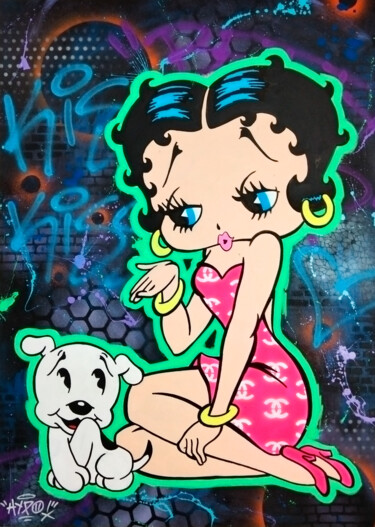
Alessio Hassan Alì (Hipo)
Acrílico en Lienzo | 39,4x27,6 in
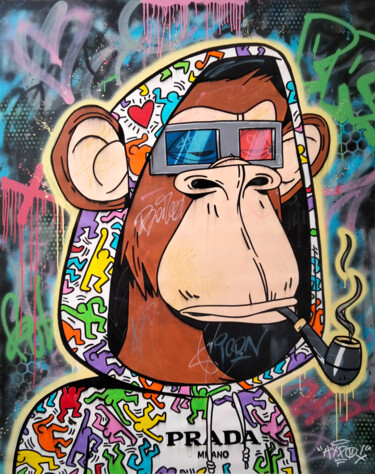
Alessio Hassan Alì (Hipo)
Acrílico en Lienzo | 70,9x55,1 in
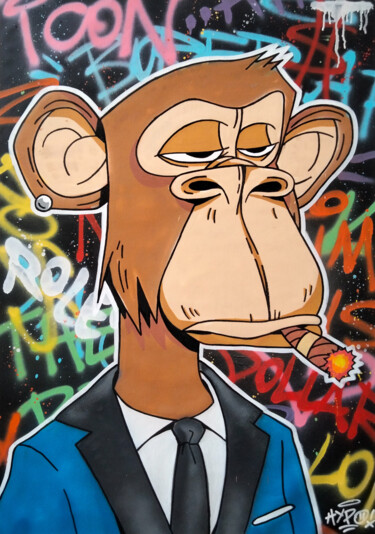
Alessio Hassan Alì (Hipo)
Pintura al aerosol en Lienzo | 39,4x27,6 in
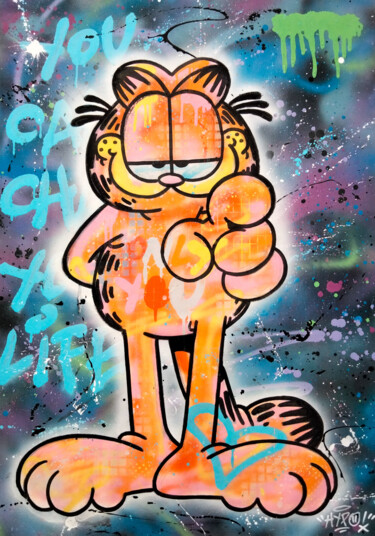
Alessio Hassan Alì (Hipo)
Pintura al aerosol en Lienzo | 39,4x27,6 in
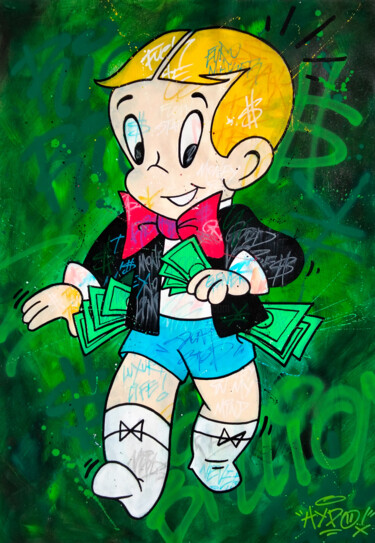
Alessio Hassan Alì (Hipo)
Acrílico en Lienzo | 39,4x27,6 in
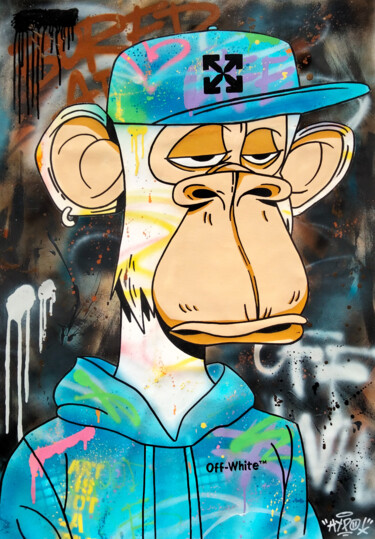
Alessio Hassan Alì (Hipo)
Pintura al aerosol en Lienzo | 39,4x27,6 in
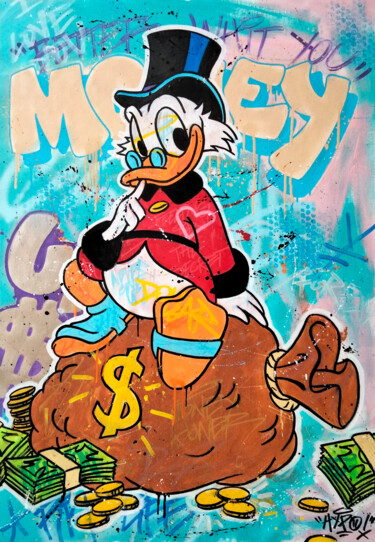
Alessio Hassan Alì (Hipo)
Acrílico en Lienzo | 39,4x27,6 in
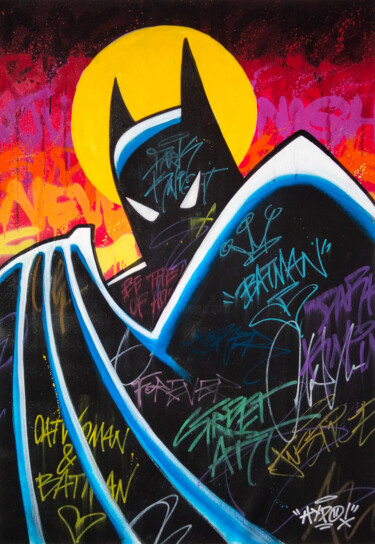
Alessio Hassan Alì (Hipo)
Acrílico en Lienzo | 39,4x27,6 in
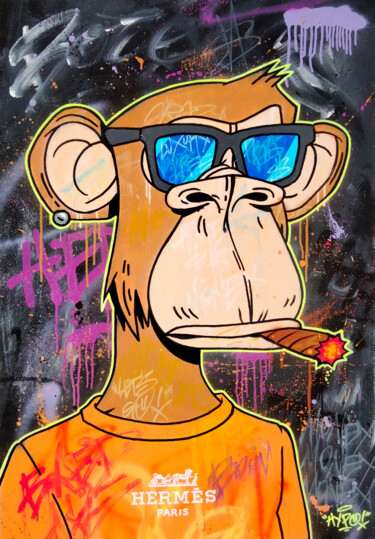
Alessio Hassan Alì (Hipo)
Pintura al aerosol en Lienzo | 39,4x27,6 in
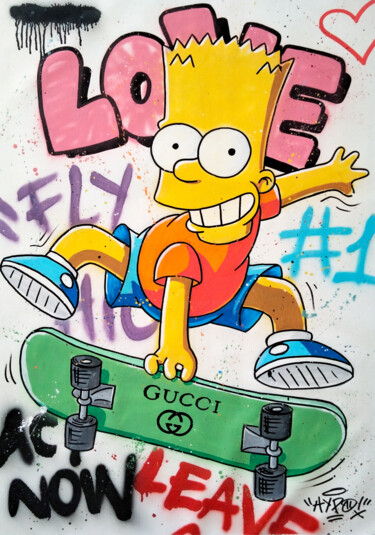
Alessio Hassan Alì (Hipo)
Pintura al aerosol en Lienzo | 39,4x27,6 in
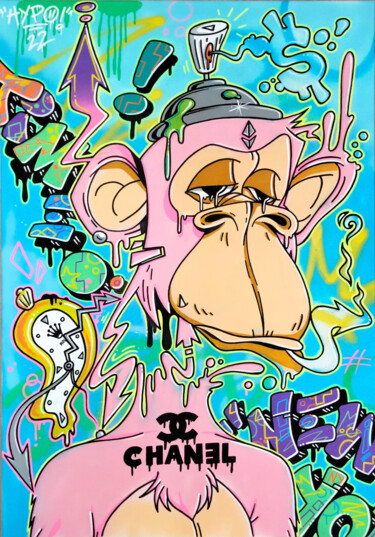
Alessio Hassan Alì (Hipo)
Pintura al aerosol en Lienzo | 39,4x27,6 in
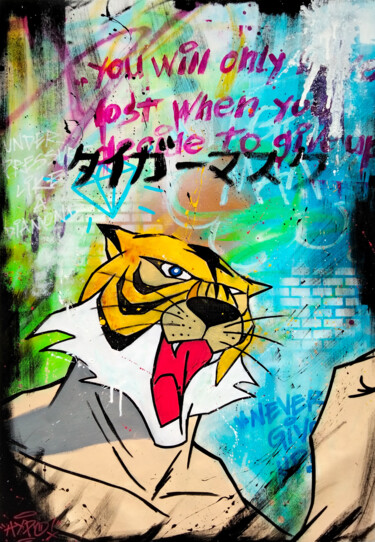
Alessio Hassan Alì (Hipo)
Acrílico en Lienzo | 39,4x27,6 in
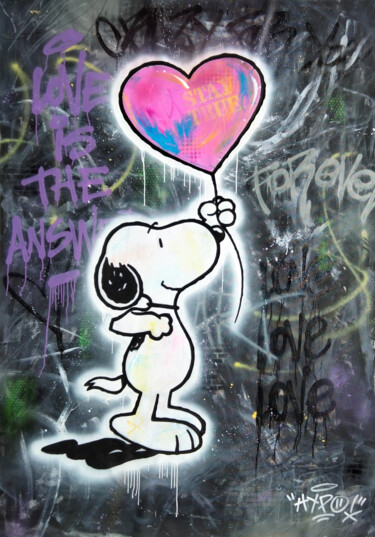
Alessio Hassan Alì (Hipo)
Acrílico en Lienzo | 78,7x55,1 in
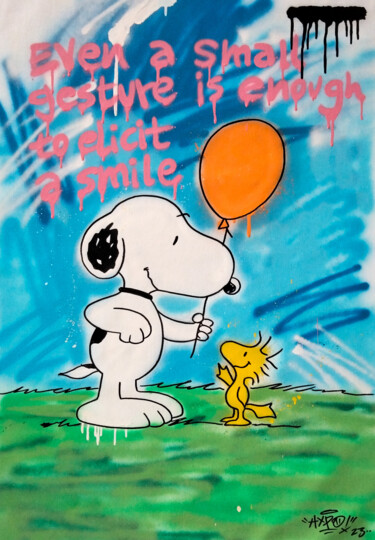
Alessio Hassan Alì (Hipo)
Pintura al aerosol en Lienzo | 39,4x27,6 in
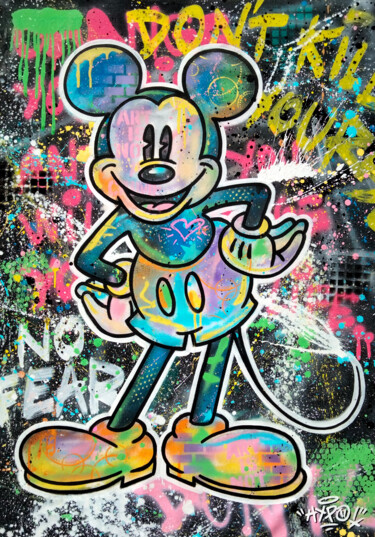
Alessio Hassan Alì (Hipo)
Pintura al aerosol en Lienzo | 39,4x27,6 in
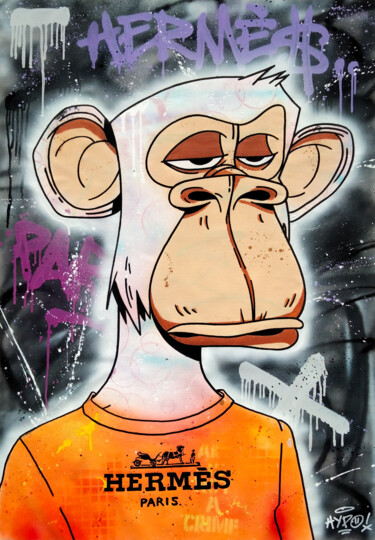
Alessio Hassan Alì (Hipo)
Pintura al aerosol en Lienzo | 39,4x27,6 in
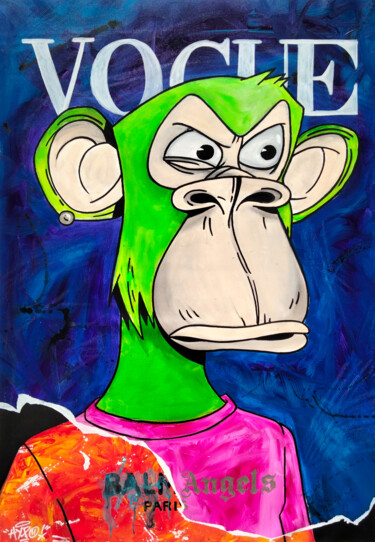
Alessio Hassan Alì (Hipo)
Acrílico en Lienzo | 39,4x27,6 in
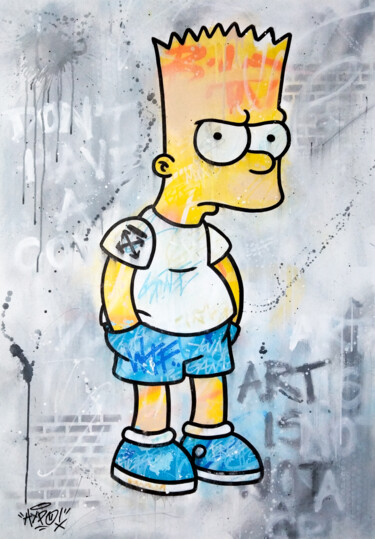
Alessio Hassan Alì (Hipo)
Acrílico en Lienzo | 39,4x27,6 in

Simone De Rosa
Pintura al aerosol en Lienzo | 19,7x15,8 in
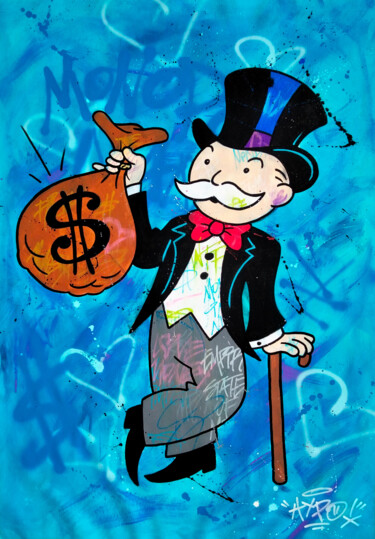
Alessio Hassan Alì (Hipo)
Acrílico en Lienzo | 39,4x27,6 in
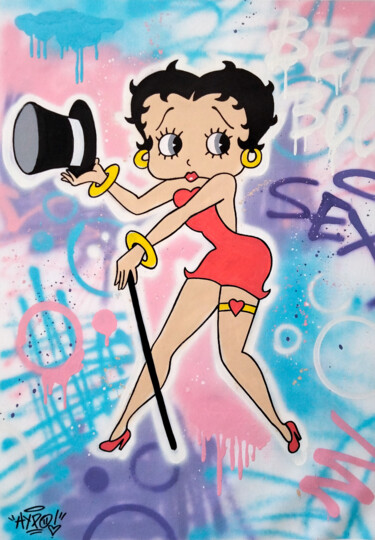
Alessio Hassan Alì (Hipo)
Pintura al aerosol, Acrílico | 39,4x27,6 in
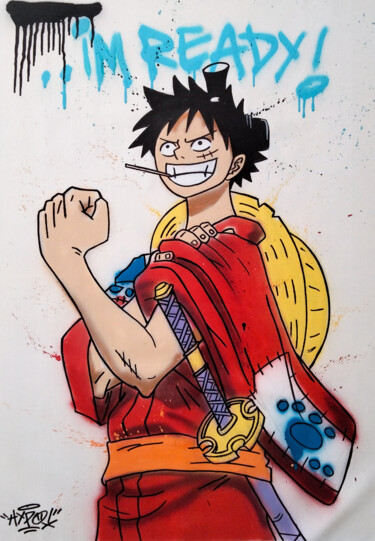
Alessio Hassan Alì (Hipo)
Pintura al aerosol en Lienzo | 39,4x27,6 in
